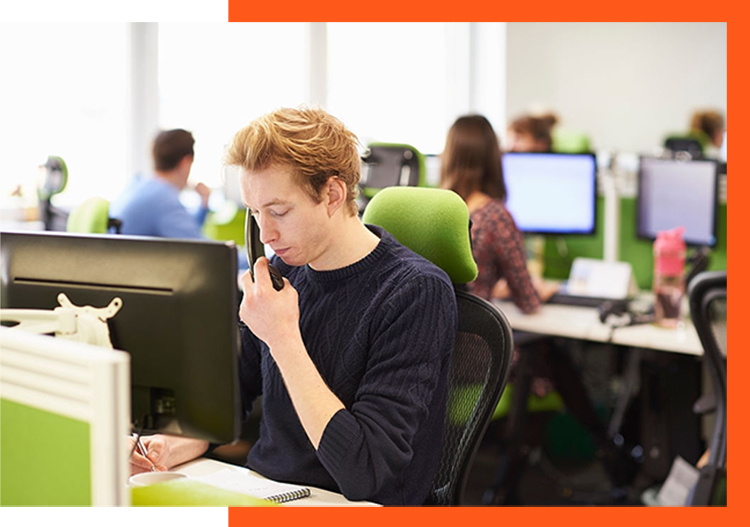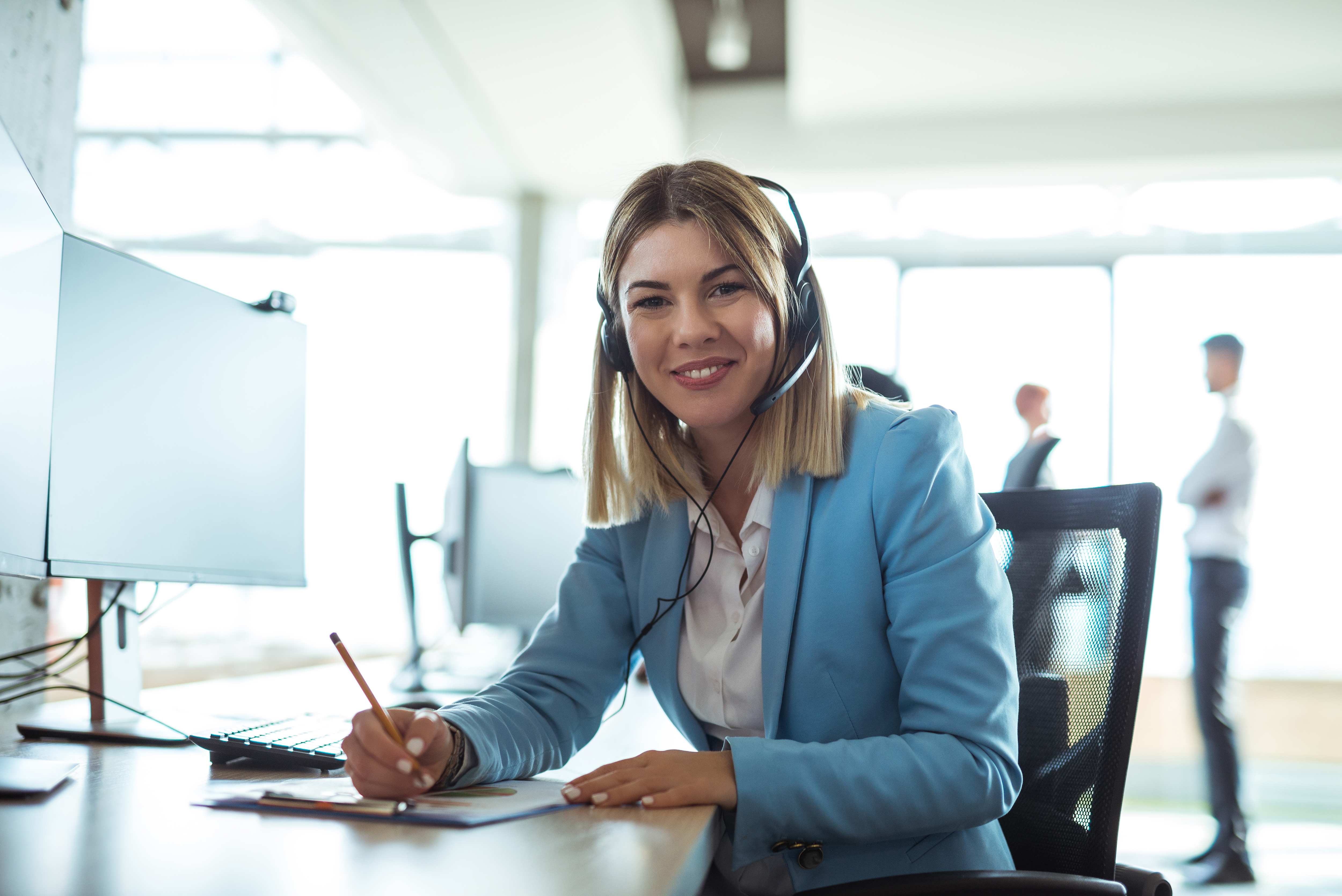All Categories
Featured
Table of Contents
- – Which Is The Best Live Answering Services - Aus...
- – What Is The Best What Is A Phone Answering Ser...
- – Which Is Best What To Look For In A Phone Answ...
- – What Is The Best How To Answer The Phone Prof...
- – What Is The Best The Ultimate Guide To Teleph...
- – Which Is The Best Answering Services Plan
Which Is The Best Live Answering Services - Australia Service?
This device and its followers were designed by Sava Jacobson, an electrical engineer with a personal consulting service. While early answering machines utilized magnetic tape technology, the majority of modern equipment uses solid state memory storage; some devices utilize a mix of both, with a solid-state circuit for the outbound message and a cassette for the inbound messages.
"toll saving" below) (telephone answering service). This works if the owner is screening calls and does not wish to talk with all callers. In any case after going, the calling celebration must be informed about the call having been answered (for the most part this starts the charging), either by some remark of the operator, or by some greeting message of the TAD, or resolved to non-human callers (e.
This holds particularly for the Littles with digitally stored greeting messages or for earlier makers (before the increase of microcassettes) with an unique limitless loop tape, separate from a second cassette, devoted to recording. There have actually been answer-only gadgets with no recording capabilities, where the greeting message needed to inform callers of a state of present unattainability, or e (business call answering service).
What Is The Best What Is A Phone Answering Service? For The Price

about schedule hours. In taping TADs the welcoming generally includes an invite to leave a message "after the beep". A voice mail that utilizes a microcassette to record messages On a dual-cassette answerphone, there is an outbound cassette, which after the defined number of rings plays a pre-recorded message to the caller.

Single-cassette voice mail contain the outgoing message at the beginning of the tape and inbound messages on the remaining space. They initially play the statement, then fast-forward to the next readily available area for recording, then record the caller's message. If there are numerous previous messages, fast-forwarding through them can cause a considerable delay.
This beep is frequently referred to in the welcoming message, requesting that the caller leave a message "after the beep". Littles with digital storage for the recorded messages do not reveal this hold-up, of course. A TAD may offer a push-button control center, where the answerphone owner can call the house number and, by getting in a code on the remote telephone's keypad, can listen to taped messages, or erase them, even when away from home.
Which Is Best What To Look For In A Phone Answering Service For Your ... Company

Thereby the device increases the number of rings after which it answers the call (normally by 2, leading to 4 rings), if no unread messages are currently stored, however answers after the set number of rings (usually two) if there are unread messages. This permits the owner to discover whether there are messages waiting; if there are none, the owner can hang up the phone on the, e.
Some machines likewise permit themselves to be from another location activated, if they have been turned off, by calling and letting the phone ring a particular a great deal of times (usually 10-15). Some company desert calls already after a smaller variety of rings, making remote activation difficult. In the early days of Little bits an unique transmitter for DTMF tones (dual-tone multi-frequency signalling) was regionally required for remote control, because the previously employed pulse dialling is not apt to communicate appropriate signalling along an active connection, and the dual-tone multi-frequency signalling was executed step-by-step.
Any incoming call is not identifiable with respect to these residential or commercial properties in advance of going "off hook" by the terminal equipment. So after going off hook the calls must be changed to suitable gadgets and just the voice-type is immediately accessible to a human, however perhaps, however must be routed to a LITTLE (e.
What Is The Best How To Answer The Phone Professionally (With Examples) To Buy Right Now?
What if I informed you that you do not need to actually choose up your gadget when responding to a consumer call? Another person will. So convenient, ideal? Addressing phone calls doesn't need someone to be on the other end of the line. Effective automated phone systems can do the trick simply as efficiently as a live agent and in some cases even much better.
An automated answering service or interactive voice response system is a phone system that interacts with callers without a live person on the line - phone answering service. When business utilize this technology, consumers can get the answer to a concern about your service just by utilizing interactions set up on a pre-programmed call circulation.
Although live operators upgrade the client service experience, numerous calls do not need human interaction. A basic recorded message or directions on how a customer can obtain a piece of information generally resolves a caller's immediate requirement - reception services. Automated answering services are a basic and reliable way to direct inbound calls to the best individual.
What Is The Best The Ultimate Guide To Telephone Answering Services On The Market Now
Notification that when you call a business, either for support or item questions, the first thing you will hear is a pre-recorded voice greeting and a series of options like press 1 for customer care, press 2 for queries, and so on. The pre-recorded alternatives branch off to other options depending upon the customer's choice.
The phone tree system helps direct callers to the best person or department utilizing the keypad on a smart phone. In some instances, callers can use their voices. It deserves noting that auto-attendant options aren't limited to the ten numbers on a phone's keypad. When the caller has picked their very first alternative, you can develop a multi-level auto-attendant that uses sub-menus to direct the caller to the best type of help.
The caller does not need to interact with an individual if the auto-attendant phone system can handle their issue. The automatic service can route callers to an employee if they reach a "dead end" and need support from a live representative. It is costly to employ an operator or executive assistant.
Which Is The Best Answering Services Plan
Automated answering services, on the other hand, are considerably more economical and offer substantial cost savings at approximately $200-$420/month. Even if you don't have dedicated personnel to handle call routing and management, an automatic answering service improves productivity by permitting your group to focus on their strengths so they can more efficiently spend their time on the phone.
A sales lead routed to customer service is a lost shot. If a consumer who has product questions reaches the wrong department or receives insufficient responses from well-meaning employees who are less trained to handle a particular type of concern, it can be a reason for disappointment and dissatisfaction. An automatic answering system can decrease the number of misrouted calls, thereby helping your workers make much better usage of their phone time while maximizing time in their calendar for other jobs.
With Automated Answering Systems, you can produce a customized experience for both your personnel and your callers. Make a recording of your main welcoming, and merely update it frequently to reflect what is going on in your company. You can develop as numerous departments or menu choices as you want.
Table of Contents
- – Which Is The Best Live Answering Services - Aus...
- – What Is The Best What Is A Phone Answering Ser...
- – Which Is Best What To Look For In A Phone Answ...
- – What Is The Best How To Answer The Phone Prof...
- – What Is The Best The Ultimate Guide To Teleph...
- – Which Is The Best Answering Services Plan
Latest Posts
Comprehensive Phone Answering Service
Quality Ai Answering System Near Me
Cost-Effective Phone Answering Service Near Me
More
Latest Posts
Comprehensive Phone Answering Service
Quality Ai Answering System Near Me
Cost-Effective Phone Answering Service Near Me